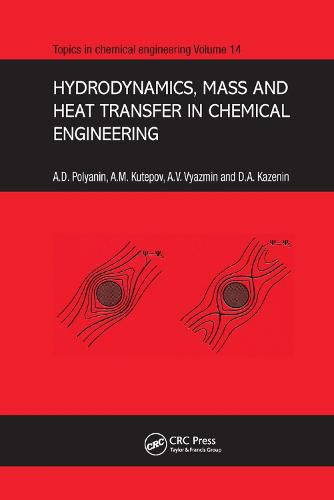Readings Newsletter
Become a Readings Member to make your shopping experience even easier.
Sign in or sign up for free!
You’re not far away from qualifying for FREE standard shipping within Australia
You’ve qualified for FREE standard shipping within Australia
The cart is loading…






Hydrodynamics, Mass and Heat Transfer in Chemical Engineering contains a concise and systematic exposition of fundamental problems of hydrodynamics, heat and mass transfer, and physicochemical hydrodynamics, which constitute the theoretical basis of chemical engineering in science. Areas covered include: fluid flows; processes of chemical engineering; mass and heat transfer in plane channels, tubes and fluid films; problems of mass and heat transfer; the motion and mass exchange of power-law and viscoplastic fluids through tubes, channels, and films; and the basic concepts and properties of very specific technological media, namely foam systems.
Topics are arranged in increasing order of difficulty, with each section beginning with a brief physical and mathematical statement of the problem considered, followed by final results, usually given for the desired variables in the form of final relationships and tables.
$9.00 standard shipping within Australia
FREE standard shipping within Australia for orders over $100.00
Express & International shipping calculated at checkout
Hydrodynamics, Mass and Heat Transfer in Chemical Engineering contains a concise and systematic exposition of fundamental problems of hydrodynamics, heat and mass transfer, and physicochemical hydrodynamics, which constitute the theoretical basis of chemical engineering in science. Areas covered include: fluid flows; processes of chemical engineering; mass and heat transfer in plane channels, tubes and fluid films; problems of mass and heat transfer; the motion and mass exchange of power-law and viscoplastic fluids through tubes, channels, and films; and the basic concepts and properties of very specific technological media, namely foam systems.
Topics are arranged in increasing order of difficulty, with each section beginning with a brief physical and mathematical statement of the problem considered, followed by final results, usually given for the desired variables in the form of final relationships and tables.